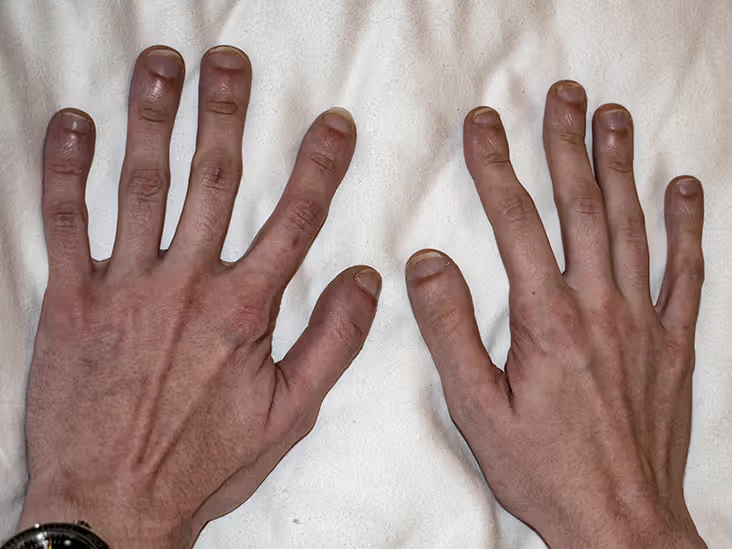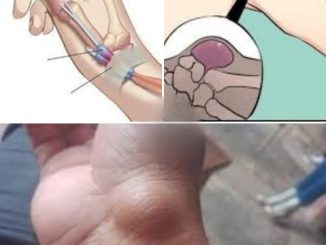When it comes to health, early detection is key. One of the simplest and most effective at-home tests to check for potential health issues—especially lung cancer—is the Schamroth Window Test. This quick test, recommended by doctors, involves placing the tips of your index fingers together to see if there’s a small diamond-shaped gap. If not, it could indicate finger clubbing, a condition linked to serious underlying diseases.
What Is the Schamroth Window Test?

The Schamroth Window Test is a straightforward method used to detect finger clubbing, a condition where the fingers and nails undergo noticeable changes due to prolonged low oxygen levels in the blood.
How to Perform the Test
- Place the tips of your two index fingers together, ensuring that the fingernails are touching.
- Look closely at the space between the nails.
- Normal Result: A small, diamond-shaped gap should be visible between the fingernails.
- Abnormal Result: If there is no gap, it could indicate finger clubbing, which is commonly associated with serious health conditions.
If your fingers fail this test, it’s time to dig deeper into possible underlying causes.
What Causes Finger Clubbing?
Finger clubbing doesn’t occur randomly. It’s usually a symptom of an underlying medical condition, often linked to long-term oxygen deprivation in the blood. This process happens gradually in different stages, leading to noticeable changes in the fingers over time.
Some of the most common causes of finger clubbing include:
1. Lung Cancer
Lung cancer is one of the leading causes of clubbed fingers. In fact, 35% of lung cancer patients experience this symptom. If you have a persistent cough, unexplained weight loss, or chest pain, it’s crucial to consult a doctor.
2. Chronic Lung Diseases
Many chronic lung conditions can contribute to finger clubbing, including:
- Chronic Obstructive Pulmonary Disease (COPD)
- Pulmonary Fibrosis
- Tuberculosis (TB)
- Bronchiectasis
These diseases cause prolonged low oxygen levels, leading to tissue changes in the fingers.
3. Heart Diseases
Heart conditions that reduce oxygen circulation in the blood may also lead to clubbing. Some of these include:
- Congenital Heart Defects
- Bacterial Endocarditis (infection of the heart valves)
- Cyanotic Heart Disease
If heart disease is the cause, additional symptoms may include shortness of breath, swelling in the legs, and extreme fatigue.
4. Liver Disease
Cirrhosis and other severe liver conditions can disrupt normal oxygen transport in the body, leading to peripheral changes such as clubbed fingers. If you notice yellowing of the skin (jaundice) along with clubbing, it may indicate liver dysfunction.
5. Digestive Disorders
Conditions such as Crohn’s disease, ulcerative colitis, and cystic fibrosis are known to contribute to clubbing. These diseases affect nutrient absorption, which in turn impacts oxygen levels and blood circulation.
Other Symptoms to Watch For

Finger clubbing itself isn’t a disease—it’s a warning sign. If you perform the Schamroth Window Test and don’t see a diamond-shaped gap, check for other concerning symptoms, such as:
- Persistent cough (especially with blood)
- Unexplained weight loss
- Chronic fatigue and shortness of breath
- Chest pain or difficulty breathing
These symptoms combined with clubbed fingers could indicate a serious health problem that requires immediate medical attention.
When Should You See a Doctor?
If your Schamroth Window Test result is abnormal or if you experience any of the symptoms listed above, don’t ignore it. Seek medical advice immediately. Your doctor may recommend:
- Chest X-rays or CT scans (to check for lung cancer or lung disease)
- Blood tests (to detect infections or autoimmune diseases)
- Echocardiogram (to examine heart health)
Early diagnosis can significantly improve treatment outcomes, especially for conditions like lung cancer and heart disease.
Can Finger Clubbing Be Reversed?

Finger clubbing itself is not reversible, but treating the underlying condition can prevent it from worsening. The key is early intervention. If lung disease or heart disease is diagnosed in the early stages, proper treatment can stop further progression.
Some steps to improve overall lung and heart health include:
- Quitting smoking (reduces lung disease risk)
- Regular checkups (especially if you have a family history of lung or heart disease)
- Staying physically active (helps improve oxygen circulation)
- Maintaining a healthy diet (supports heart and lung function)
Taking these precautions can significantly reduce the risk of developing conditions that cause clubbing.
Conclusion
The Schamroth Window Test is a simple yet powerful self-examination technique that can help identify finger clubbing, an early warning sign of serious conditions like lung cancer, heart disease, and chronic lung disorders. While it’s not a definitive diagnosis, it can be an early clue that something isn’t right.
If you notice finger clubbing along with other worrisome symptoms, consult a doctor immediately. Early detection and treatment can make all the difference in managing and preventing life-threatening diseases.
Your health is in your hands—literally! Try this test today and stay proactive about your well-being.


